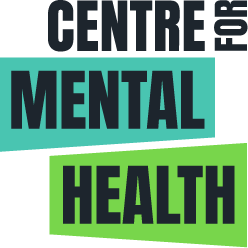Recently government published an action plan: Closing the gap: Priorities for essential change in mental health, building on the 2011 strategy paper ‘No Health without Mental Health’, which set out how to improve the mental health and wellbeing. The strategy aimed to put mental health on a par with physical health (parity of esteem) and to tackle negative outcomes. Lots of positive work has happened since the strategy was published, but there is a lot more still to do and hopefully this action plan will spur the relevant bodies back into action.There are key roles for all government departments as well as local authorities. The Health and Social Care Act 2012 enshrined parity of esteem in law and that esteem is now in the action plan. The Welfare Reform Act 2012 also has had major implications for people with mental health problems.
‘Closing the gap’ lists 25 areas where people can expect to see, and experience, the fastest changes. These fall under the following five headlines:
- Increasing access to mental health services.
- Improving the quality of mental health services.
- Integrating physical and mental health care.
- Starting early to promote mental wellbeing and prevent mental health problems.
- Improving the quality of life of people with mental health problems.
1. Increasing access to mental health services
People have to wait too long for treatment but access to services is a very important step towards recovery. We therefore fully support the commitment to introduce clear standards for access and waiting times by 2015 but they need to apply to children and young people as well as adults. To monitor that this is taking effect in child and adolescent mental health services (CAMHS), the government must collect the appropriate data.
As the Bradley Commission’s first briefing paper explored, Black and minority ethnic (BME) communities are still a group less likely to access mental health services and, when they do, it’s often through less mainstream routes, such as community organisations or liaison and diversion services. It is fantastic to see in the action plan that the government is committed to working with the Race Equality Foundation and other stakeholders to understand why BME communities find it so hard to access services.
2. Improving the quality of mental health services
Quality of mental health services is a huge issue; unlike in physical health services the friends and family test has not been in place. This means that mental health services have not been under the same obligation as physical health services to improve. Information about public attitudes to the quality of services has not been collected and services can’t find out what works and what doesn’t work. We welcome that from the end of December 2014, the friends and family test will be used in all mental health care settings including for children and young people.
3. Integrating physical and mental health care
If the health care system is going to become more efficient, it is vital that mental health and physical health are integrated. Although there was a clear objective in the strategy that more people with mental health problems would have good physical health, this has still not been realised.
If mental health and physical health are better integrated it will have a number of positive outcomes, not only leading to better health but also to savings for the NHS. A great example of such integration is psychiatric liaison services. They provide mental health care to people being treated for physical health conditions in general hospitals and were found by the Centre to save an average hospital £5 million a year. Centre research has also calculated that between 12% and 18% of all NHS expenditure on long-term conditions is linked to poor mental health and wellbeing – this equates to roughly £10 billion in England each year.
Accordingly, it is very good to see that the government has asked Health Education England to develop training programmes for healthcare employers on mental health problems and how they may affect their staff.
4. Starting early to promote mental wellbeing and prevent mental health problems
The government has acknowledged that half of people with lifetime mental health problems first experience symptoms by the age of 14. One in ten children aged between 5 and 16 has a mental health problem, the most common of which is conduct disorder. At its most severe, conduct disorder affects 5% of children but many more will suffer from early behavioural problems that will have serious consequences. If these early behavioural problems are not dealt with, the children affected are twice as likely to leave school with no qualifications, three times more likely to become a teenage parent, six times more likely to die before age 30 and 20 times more likely to end up in prison.
The action plan commits to support schools to identify mental health problems sooner. This is very encouraging, but more needs to be done.
Too often teachers don’t know the symptoms of mental health problems in children and, if they do, are not sure where to refer them. The Centre recently published a series of tailored briefings aimed at different professionals that may come in to contact with children who have the signs of conduct disorder. One of them is specifically for those working in schools.
We know that targeted parenting programmes are effective and cost effective, for severe behavioural problems. The cost of these interventions is more than covered by subsequent savings in public spending. Parenting programmes need to be easily accessible to those parents who need it, but we know that this is not currently the case.
5. Improving the quality of life of people with mental health problems
Mental health lags behind many other conditions on the information front. Cancer has a long established National Cancer Intelligence Network and there is also a Child and Maternal Health Intelligence Network. Public Health England and NHS England are currently establishing the Mental Health Intelligence Network (MHIN). This network will bring together comprehensive information about mental health and wellbeing to provide a greater insight into common mental health problems, how they vary with age, and what the make-up of different areas is in relation to mental health problems.
The information will help health and wellbeing boards and clinical commissioning groups commission the most appropriate services for their areas. It will also help better inform the government of what works. Practical and substantive change cannot be made without this information.
In recent years there has been a central government cut back on collection of data, hopefully the MHIN will help buck this trend. It is encouraging to see that the government is pushing for greater information sharing. Integration can only truly happen if the information is shared, however we must make sure that the correct information is shared. Information is vital to drive change and to influence policy.
Why this document is good
This paper re-asserts who in the health and social care world are responsible for what in mental health. It is brilliant news that the government is planning on measuring their progress against the priority activities described in the document and that they will report back next year. This means that we should be able to see where improvements are really being made and where work stills need to be done.



